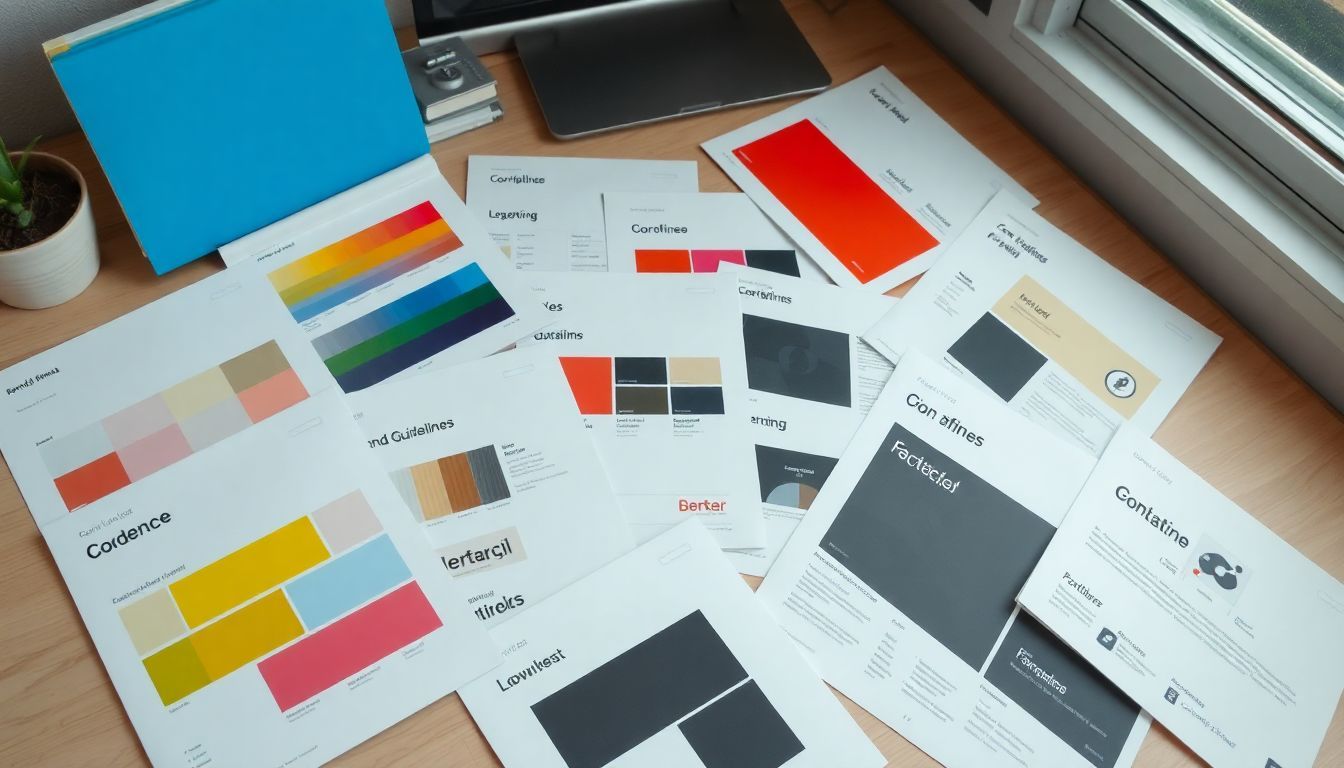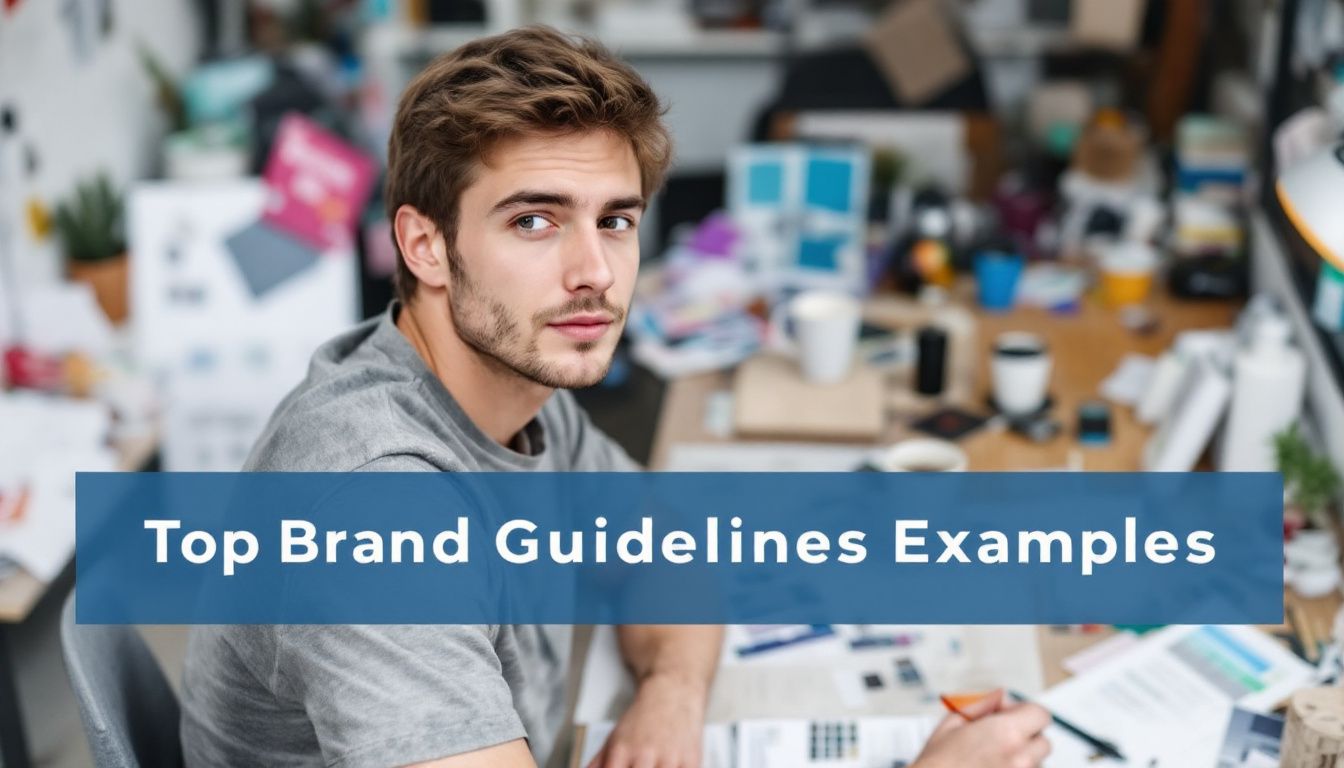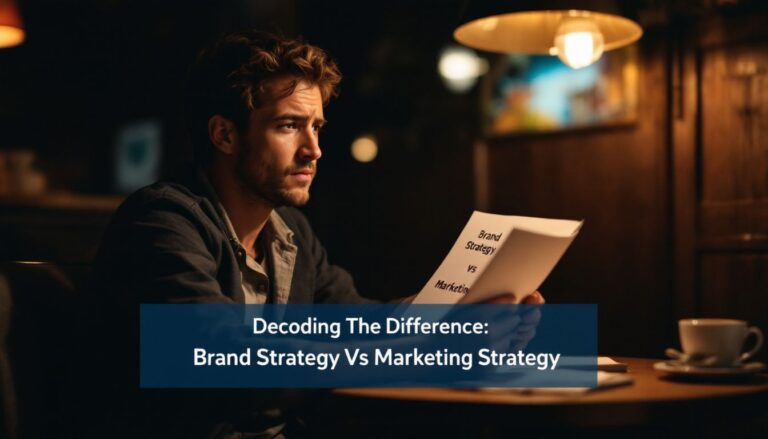Feeling stuck on how to create clear and engaging brand guidelines, but unsure where to start? Many of us face this challenge. Research shows that brands with consistent style guides earn customer trust—and more money. 1 To spark your ideas, here are some great brand guideline examples from companies like Airbnb, Spotify, and Starbucks. 2 Keep reading for helpful tips you can use right away!
Key Takeaways
- Solid brand guides build trust—and profits—by keeping colors, fonts, and voice steady across your site, socials, and ads.
- Big names like Airbnb, Spotify, and Netflix set clear logo rules—even down to exact pixel sizes (Spotify needs at least 70 pixels online)—so customers quickly know it’s them.
- Great brand guides stick to 1-3 main colors (with exact HEX, RGB, or CMYK codes), simple fonts, and a clear voice that fits company values.
- Including visuals of right and wrong use helps your team avoid slip-ups—like Instagram and Uber do with spacing and placement tips.
- Brand guides can be short and sweet: just start with logo rules, main colors, typefaces, and basic voice—then grow it naturally as your brand grows.
Why Are Brand Guidelines Important?

Alright, we’ve got the basics covered—so here’s why brand guidelines truly matter. Think of them as your brand’s backbone. They clearly define how your business looks, sounds, and feels at every interaction.
Without clear guidelines, your brand can slowly lose its personality, getting lost in the market. Strong guidelines build customer trust, help people quickly recognize you, and boost your bottom line.
Keeping your brand consistent wins loyal fans and increases sales. Smart guidelines make choosing colors, fonts, and styles easy—everything stays true to your core values. They help everyone, from marketing to customer support, present your brand clearly and consistently.
For designers, these guidelines set helpful boundaries, leaving room for creative touches. They protect your logo, colors, and message—across your website, social media, or printed brochures—always keeping things aligned. 1
Key Elements of Effective Brand Guidelines
Every brand needs a clear roadmap to stay on track. Good brand guidelines have key parts that work together to make your brand shine.
Logo Usage
I often remind my clients—logo guidelines hold your brand together. Clear rules on size, color, and placement keep things consistent everywhere. For example, Spotify sets size limits at 70 pixels for digital use and 20 mm in print. 2 These exact measurements stop logos from becoming too small and unclear. Big brands like Twitch, TikTok, and Coca-Cola offer visual guides, showing exactly how to use their logos—and what to avoid.
Walmart even adds extra style pointers about layout and colors—small details that keep their image strong.
Color Palette
I usually pick 1–3 main colors for my brand, keeping it simple so people spot it right away. 3 You’ll see these everywhere—from my website and social pages to business cards.
Then I choose about 1–6 extra shades for my secondary palette; these just support my main colors and help tie everything together.
For each color, I clearly list the HEX, RGB, and CMYK codes—that way my team can always match the exact shade. Colors are a huge deal because they stir emotions, stick in people’s minds, and help them recall my brand. 4 A good brand guide always shows quick examples of how to use colors right (and common mistakes to avoid).
Now, let’s talk fonts, since the right typography builds neatly onto your color decisions and makes the whole brand feel complete.
Typography and Fonts
Colors set the mood—but fonts give your brand personality. Choosing the right typography shapes how people read your message. Smart brands pick typefaces matching their style, easy to read on every screen.
For instance, Royal Caribbean uses Kapra Light and Darwin fonts to reflect their adventurous cruise vibe. 5 The North Face goes with ITC Franklin Gothic, a bold choice that fits outdoor energy perfectly.
Your brand guide needs clear font rules. Name fonts clearly, and show exactly how to use them—what sizes, spacing, and if using ALL CAPS makes sense. Include primary fonts plus web-safe alternatives to keep the same style across all platforms.
UC Berkeley does this well—they allow some font variety but maintain a strong brand feel. 5 This flexibility lets teams produce materials that match the main brand image seamlessly.
Brand Voice and Tone
Just as fonts shape your text visually, brand voice shapes how your message feels. I set clear voice guidelines—to keep my tone consistent across all my content. My brand voice needs to reflect my mission and core values, so conversations with my audience ring true.
It’s an essential step—brands like Zendesk and Waze use strong voice guidelines to clearly stand apart, even in busy markets. 6
Brand voice goes beyond just words—it helps build genuine relationships with people. I have to understand what my customers think, what they really care about, so my words connect.
A clear voice guide applies well to every interaction, from quick tweets to customer-support emails. The strongest brand voices feel honest, approachable, and natural. People connect more easily, trust grows, and loyal supporters stay with the brand…often for years. 7
Top Brand Guidelines Examples
Let me show you some brand guidelines that will spark your creativity. These top examples will give you fresh ideas for your own style guide.
Airbnb
I really appreciate Airbnb’s style guide—it’s all about community and connection. The flowing logo, known as the “Bélo”, symbolizes belonging clearly and consistently across platforms. 8 Their warm color palette instantly feels inviting, friendly, and open to everyone. Simple and clear logo placement guidelines leave no confusion about spacing or layout. Plus, Airbnb’s messaging always stays inclusive, friendly, and easy-going.
Their branding guidelines offer an ideal model of consistent yet casual design. The UI toolkit shows clear visuals, guiding designers to use the brand accurately every single time.
Everything—from fonts to photo styles—aligns nicely with their values of connection and inclusivity. 8 The style guide thoughtfully covers digital and print materials, ensuring visuals stay consistent everywhere people interact with the brand.
Netflix
Netflix gives us a simple, easy-to-use brand guide—with consistency as the top priority. They’ve created a special login spot just for partners, so all those logo resources stay handy. 9 Their co-branding area lays out clear rules on how to use logos—and it even shows real-life examples, making it simple to see what works best. The guide touches everything you’d need, from Netflix’s familiar shade of red, to the right spacing around their wordmark.
They keep things nice and clear but still cover all the bases—so anyone using the Netflix brand can easily stay on track.
Spotify
I really like how Spotify keeps things simple and clear. They stick to their main color—Spotify Green—and only pair it with black, white, or photo backgrounds. To keep things neat, Spotify makes sure the logo stays at least 70 pixels wide online or 20 mm wide in print. 10 Changing the logo’s direction, color, or shape is totally off-limits. This strict approach helps Spotify stay familiar and recognizable everywhere you see them. Their guidelines even show clear examples of correct and incorrect uses.
Plus, they make fonts, color codes, and partner branding rules easy to find.
Next, let’s see how Duolingo keeps its brand fun but consistent.
Duolingo
Spotify uses music to show its character—but Duolingo uses a quirky green owl. Duolingo’s brand guide is friendly, clear, and fun. It focuses sharply on their goal, while still bringing their humor to life.
The bright-green owl mascot pops up everywhere, from app screens to ads, guided by simple rules for consistency. 11
Their brand guide highlights five core traits: inspiring, inclusive, can-do, curious, and quirky. You see these traits right away, in their playful designs and laid-back tone.
Duolingo reaches over 300 million users, teaching more than 35 languages. Their simple tagline, “Everyone can Duolingo”, matches their aim perfectly: make language learning easy and open to anyone.
Bright colors and easy shapes turn lessons into relaxed games. Over 500 colleges now accept the Duolingo English Test as proof of English knowledge. From app visuals to social media posts—every piece of their brand clearly says learning languages can be fun.
Starbucks
Duolingo keeps language learning playful… but Starbucks turns coffee branding into something special. I really like how Starbucks leads with its philosophy right in their brand guidelines.
Before talking details, the coffee giant shares its mission and vision clearly. 12 Their guidelines stress community values, making everyone feel included from day one.
The guide gives easy-to-follow tips for using the Starbucks logo and brand elements—the famous green color now recognized everywhere. You’ll see that green shade on cups, store signs, packaging, and social media too.
Staff use the guide daily, helping Starbucks keep a consistent look around the globe. 13 That simple branding approach has made their mermaid logo familiar to coffee drinkers worldwide.
Starbucks leans on coffee branding, but Instagram focuses heavily on visual appeal. I really like Instagram’s brand guidelines—they clearly show how and how not to place their app icon.
They include visual examples for right and wrong placements, which keep the logo crisp and noticeable. This is important, especially for social media platforms, where brands are recognized quickly at a glance. 14
Instagram sticks to a simple, clear color palette. Their guidelines even give exact details on how to apply their gradient colors—the vibrant blend you’ve probably seen many times.
Designers have precise steps to keep the brand looking uniform, both on screens and in print. What stands out most, to me anyway, are the visual examples showing how much empty space belongs around the logo.
Clear instructions like these help Instagram keep its image tidy and easily spotted wherever you see it. 14
Uber
Shifting gears from Instagram’s visual style—Uber really steps it up with their brand guidelines. They keep things clean, straightforward, and still have impact. Uber gives lots of attention to their signature blue shade, highlighting the idea of safety. 2 Their sleek and modern look sticks with you—easy to notice, quick to remember.
Uber clearly spells out logo rules and font styles. 15 They stick with one font called “Uber Move”, and provide simple examples for different font sizes. Partners get clear directions on using Uber’s visuals, ensuring consistency everywhere.
With this careful attention, Uber’s brand looks sharp on apps, websites, print materials—you name it.
How to Create Your Own Brand Guidelines
Creating your own brand guidelines starts with a clear vision of who you are as a brand – I’ll show you simple steps to build a style guide that keeps your brand consistent and makes your logo, colors, and voice shine across all platforms.
Define Your Brand Identity
I kick off brand guidelines by figuring out what makes my brand special. Those core values—they should come through loud and clear, in every logo, color choice, and message. Brand identity isn’t just a fancy logo; it’s everything together—telling my story, in my own way.
Usually, I’ll jot down quickly what makes me different from everybody else. It helps build trust with my audience, through clear and steady messaging. 16
Great brands stick around in people’s memories because they’re always true to themselves. So, I set simple rules for visuals—like logo placement, colors, fonts—and style of communication.
These guidelines keep everything consistent, no matter where folks see my brand. And the cool thing is, good guidelines aren’t fixed forever—I tweak and update them from time to time, to stay relevant and helpful for my crew.
Use Visual Examples for Clarity
I always include lots of visuals in brand guidelines—pictures get the point across much better than words alone. Working with clients has shown me how strongly visuals reinforce brand rules.
The 28 examples shared in this article clearly show how this works. 14 Good visuals demonstrate exactly how logos should appear, how to select colors, and how to pick fonts. They leave no room for confusion or mistakes.
Clear examples also make it easy for teams to know what’s allowed—and what’s not. Companies like Duolingo and Allbirds regularly use visuals to guide their people. These examples help keep branding consistent across every channel.
Simple visuals break down tough ideas, making them easy to get, whether you’re brand-new to the team or an external partner. This approach helps the brand look consistent wherever people see it.
How Can Brand Marketing Tools Help in Developing a Consistent Brand Style Guide?
Utilizing the best tools for brand marketing can significantly enhance the development of a consistent brand style guide. These tools streamline the design process, ensuring color schemes, fonts, and logos stay uniform across all platforms. A cohesive style guide not only elevates brand recognition but also fosters trust and loyalty among consumers.
Conclusion
Brand guides form the foundation of your brand’s story. Think Airbnb or Spotify—they use clear guidelines that give them a strong, memorable identity. Yours doesn’t need to be complicated, though.
Just include basics like your logo, colors, fonts, and the type of voice you use. Start simple, and build it up gradually as your business expands. Good brand guides keep your message consistent everywhere customers find you—on websites, social media, or ads.
The result? People easily recognize and remember your business.
References
- ^ https://storychief.io/blog/brand-guidelines-done-right
- ^ https://medium.com/@uBrand_com/12-branding-style-guide-examples-for-your-inspiration-c90109121952
- ^ https://debroome.com/best-practices-how-to-write-company-brand-guidelines-colors/
- ^ https://careerfoundry.com/en/blog/ui-design/introduction-to-color-theory-and-color-palettes/
- ^ https://brandmarketingblog.com/articles/branding-how-to/brand-guide-type/
- ^ https://www.clearvoice.com/resources/creating-brand-voice-guide-great-examples/ (2024-08-13)
- ^ https://www.brandedagency.com/blog/brand-voice-guidelines
- ^ https://www.manypixels.co/blog/brand-design/brand-guides
- ^ https://brand.netflix.com/en/assets/logos/
- ^ https://www.nuclino.com/templates/brand-guidelines-spotify
- ^ https://design.duolingo.com/writing/brand-narrative
- ^ https://www.frontify.com/en/guide/brand-guidelines-examples
- ^ https://ubrand.com/blog/12-branding-style-guide-examples
- ^ https://looka.com/blog/15-brand-guidelines-examples-to-inspire-your-brand-guide/ (2024-11-13)
- ^ https://graphically.io/blog/examples-of-brand-guidelines/ (2024-10-18)
- ^ https://www.frontify.com/en/guide/brand-guidelines (2025-03-11)







